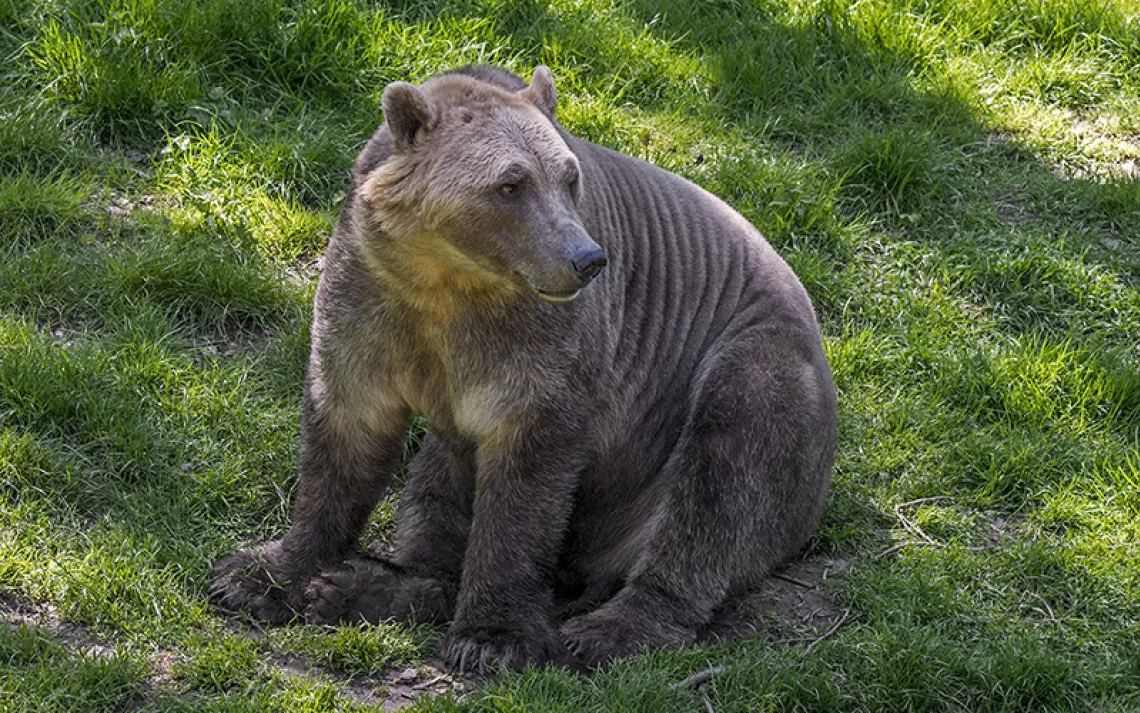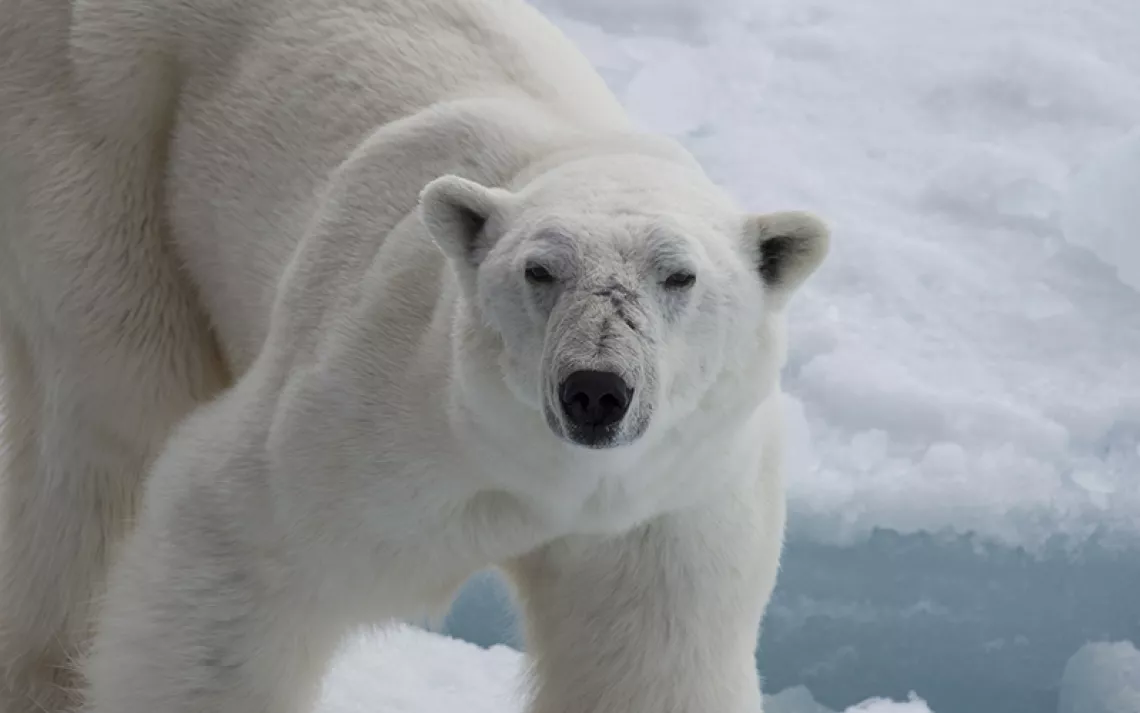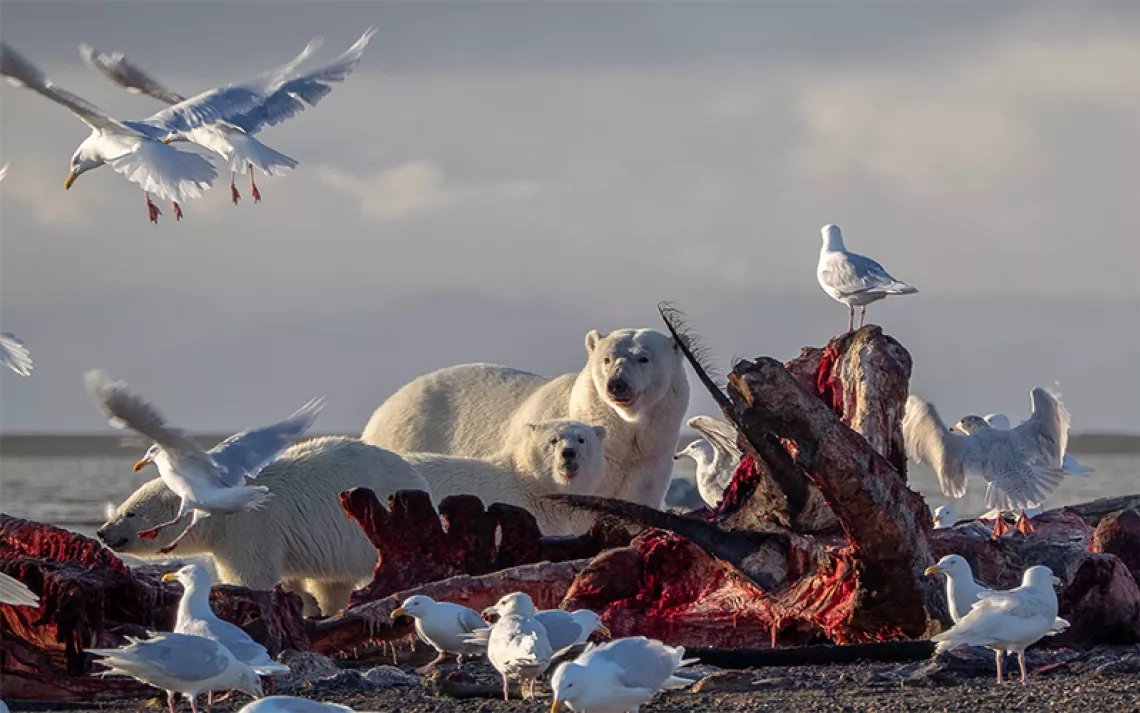Some Climate Activists Say We Should Worry Only About People, Not Polar Bears. Do We Have to Choose?
The climate movement needs to find a way to balance ecological equity and human solidarity
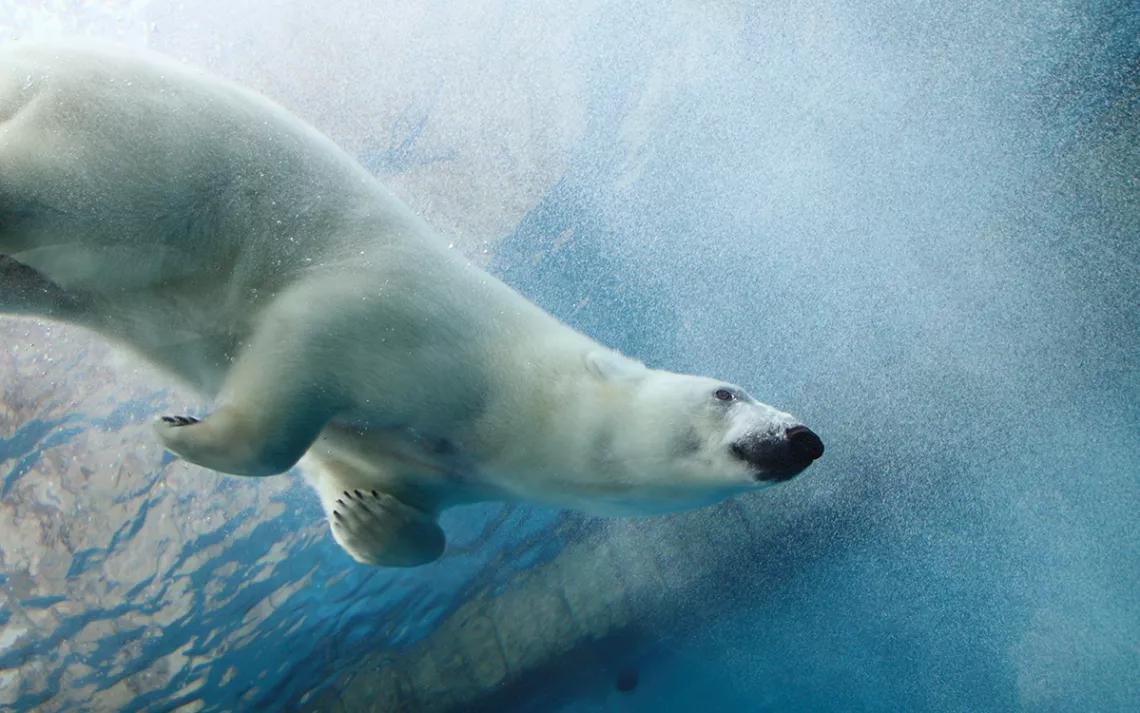
Photo by JHaviv/iStock
Have you noticed that the polar bear has become persona non grata among some of the climate movement’s most influential voices?
Take, for example, Gina McCarthy, the most powerful climate change official in the United States after President Joe Biden. As she acknowledged at a September 2018 discussion at the Commonwealth Club of California’s Climate One forum, she is personally sick and tired of hearing about polar bears. “I love them; they are cute,” she said. “But they aren’t my grandson.” And here’s McCarthy during an August 2019 discussion: “We have to stop talking about polar bears and the Arctic and start talking about our families and our children.” This is a standard part of McCarthy’s public appearances. During another Climate One discussion, in October 2020, McCarthy—who was then the head of NRDC, an organization that has a bear as its very logo—told the virtual audience, “I think way too much as green groups [we] really just talk about the only thing we care about is birds and bunnies, who are lovely, but really, we’re all talking about human beings and human lives and [that] needs to be related to families.” Another panelist, Tamara Toles O’Laughlin, who was at that time the North American director of 350.org, then came in for the dunk. “I have said it before, and I will say it again: Until I see a room full of bears sitting around trying to talk about how to save us from climate change, people in planet is where the work is happening.”
Katie Thomas, Senator Bernie Sanders’s longtime senior adviser on climate (and now an adviser to progressive stalwart Representative Ro Khanna), made a similar point during an election-night panel last November while discussing climate change politics: “The messaging and what we as a climate movement chose to focus on—are we going to focus on polar bears? Or real human people with real lives and real jobs and real children?… We have to pick.”
Do we really?
This notion that climate advocates must talk about either human well-being or the welfare of wildlife and ecosystems is a dangerous rhetorical gambit. For starters, the line strengthens the tired, old thinking that humans reside at the pinnacle of life on Earth. Secondly, it elides the fact that human civilization utterly depends on healthy soils, clean water, and thriving biodiversity. As the authors of a United Nations–sponsored report recently concluded, “Biodiversity loss and climate change are both driven by human economic activities and mutually reinforce each other. Neither will be successfully resolved unless both are tackled together.”
Yet the talking point that it’s time to stop talking about bears has become the conventional wisdom among the rising generation of climate activists, who either avoid talking about climate change’s impacts on other species or else, like McCarthy, go out of their way to express a disinterest in more-than-human nature: not just bears but also blades of grass and trees and lakes too (see here and here and here). Words matter, messaging matters, and the message being broadcast from some segments of the climate movement is that, well, other species don’t matter—at least, not enough to talk about.
This rhetoric is, in part, a useful correction. It’s a way of making clear that climate chaos isn’t solely affecting other species in faraway places; that the climate crisis is harming human communities in the here and now; and that those communities facing the worst harms are disproportionately Black, brown, or poor.
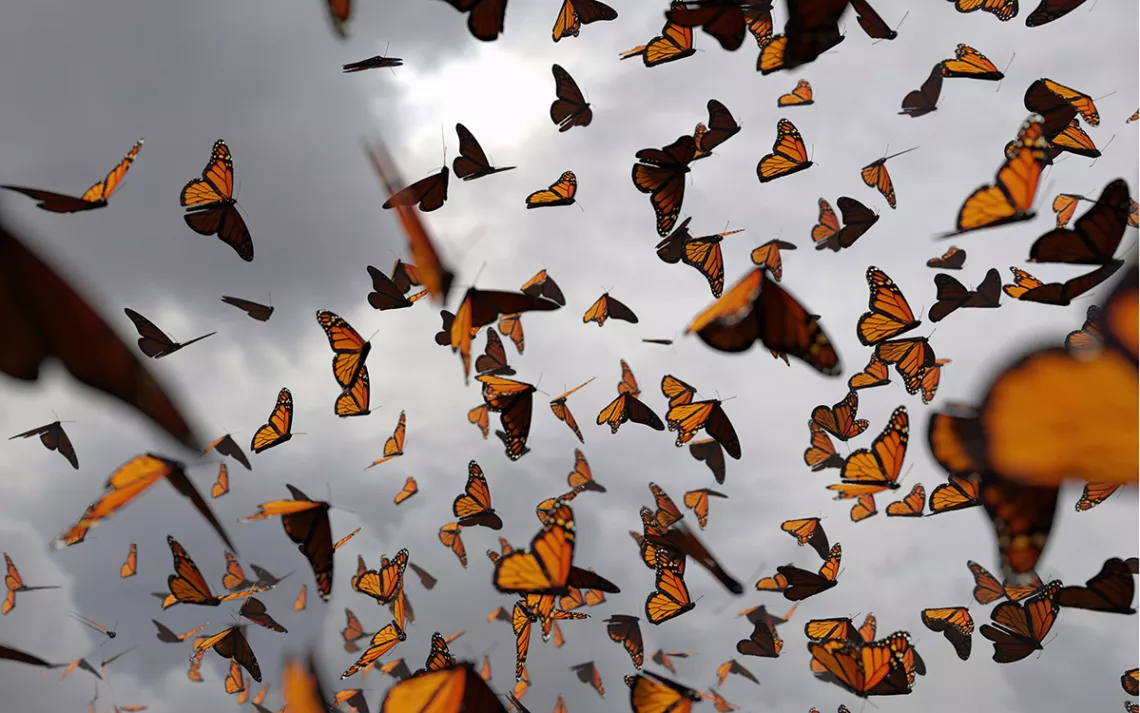
Photo by dottedhippo/iStock
But the correction risks becoming an overcorrection. To argue that it’s time to stop talking about polar bears is to say, in effect, that polar bears aren’t deserving of the airtime—the attention and action—required to protect them. It’s taken as a political truism that a social movement cannot succeed in its goals if it won’t explicitly name an enemy; see, for example, the efforts to dismantle capitalism, patriarchy, and white supremacy. Similarly, a social movement is unlikely to protect something that it simply won’t talk about.
Whenever someone says they don’t want to talk about bears and bunnies, it makes me wonder: What, exactly, are we fighting to save?
*
In important ways, the shift in rhetoric is a sign of maturity for the social movement(s) dedicated to addressing the climate crisis. It is part of the crucial—and long-overdue—process of climate politics transcending the confines of environmentalism. In that sense, the dunking on polar bears marks a necessary evolution for climate advocacy.
The first impacts from unchecked greenhouse gas emissions came in the form of changes to Earth’s geophysical and biological systems. It made sense, then, that early climate advocacy originated from within the environmental movement. The first popular book about climate change was titled, famously, The End of Nature.
By the end of the 2000s, however, it had become obvious that traditional environmentalism was insufficient to resolve as wicked a problem as global climate change. “‘Environmentalism is simply not equipped to transform the basis of human culture,” David Roberts, then at Grist, wrote in a 2010 essay. “The fact remains that the entry of the problem into American politics via environmentalism has set it on a certain cultural and political trajectory that is both inadequate and extremely difficult to escape.” As Jon Mooallem put it in his 2013 book, Wild Ones, “It was starting to feel as if the polar bear had jumped the shark.”
The problem, as many others eventually made clear, was that the attention to bears and coral reefs risked giving people the wrong impression that climate change was a remote threat. “Many Americans continue to think of climate change as a distant problem,” Anthony Leiserowitz, director of the Yale Program on Climate Change Communication, has said. “Distant in time—that the impacts won’t be felt for a generation or more—and distant in space—that this is about polar bears, or maybe some developing country.”
The pushback against the polar bears is also a reaction to the ways in which white-led environmentalism has all too often neglected the needs of human communities—especially communities of color. For a long time, it seemed like the American environmental movement cared more about critters than people. “It’s been a really nice dodge for 100 years to only talk about the animal part of the ecosystem or the flora part of the ecosystem … as if humans are an invisible hand,” Toles O’Laughlin told me when I called her to better understand her perspective. For her, the line about not focusing on bears until they have their own meetings about humans is a way of “undoing” people’s assumptions of what climate politics includes. “So really, the reframing is about helping people to reset their expectations for what is the goal [of climate action] and what is possible.”
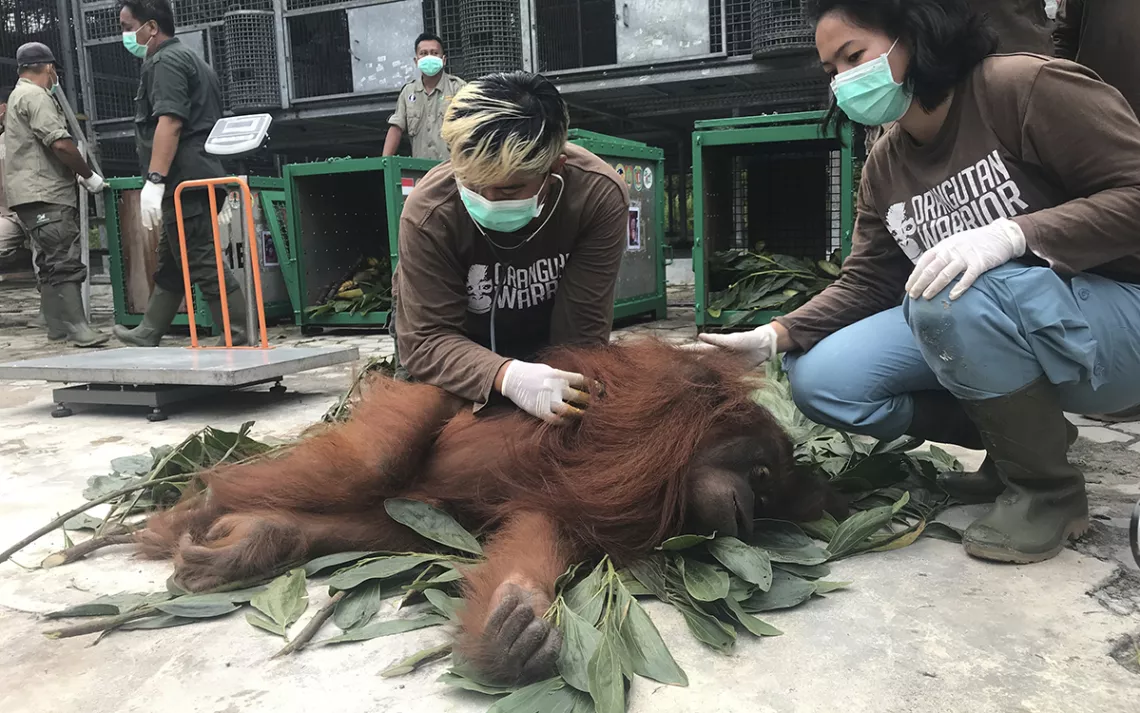
Photo by Christoph Sator/picture-alliance/dpa/AP Images
The expansion of the possible, the centering of equity and justice in climate politics, and the shift in perceptions about the dangers of climate change (nearly half of Americans now say that climate change will harm them personally) have combined to create the very thing we’ve always needed: A stand-alone climate movement that is distinct from the environmental movement from which it sprang.
That accomplishment is thanks to leaders like Toles O’Laughlin, who has worked tirelessly to illustrate the interconnections between climate chaos and other injustices—interconnections that have helped to broaden the climate movement. “And that requires that we reject colonialism and oppression and racism, and property over people,” she told me, and later continued, “We need everybody. We don’t have time for exclusivity. We don’t have time for injustice. We do not have time for oppression. It wastes so much talent and people and money.”
Toles O’Laughlin is a veteran changemaker who has spent more than half her life trying to figure out how to talk about climate change in a way that breaks down the barriers of exclusivity. But not everyone is as careful and conscientious as Toles O’Laughlin. Listen to some other voices and the concern for human welfare can sound like a near-total disregard for other living beings.
See, for example, the crew at the socialist journal Jacobin—the intellectual hub of the Bernie + AOC wing of the Democratic Party—which a few years ago dedicated an entire issue to climate change. In its pages, there wasn’t a single contributor who acknowledged that humans share this planet with billions of other living beings. To the contrary, readers were told by Jacobin staff writer Branko Marcetic that “when it comes to securing the future, it really should be about people, people, people, people.” Human domination of the planet was celebrated, as when Christian Parenti declared, “Our mission as a species is not to retreat from, or preserve, something called ‘nature,’ but rather to become fully conscious environmental makers.” A third writer, Angela Nagle, counseled: “We should support organizations that proudly place people at the center of their ambitions.”
This urge to put “people at the center” sometimes leads to weird oversimplification. In an October 2020 edition of her influential newsletter, Heated, the journalist Emily Atkin declared it was time to “abolish the treehugger.” Atkin then celebrated a rebooted environmentalism whose “goal is not to preserve the sanctity of nature, but the quality of human life.”
Atkin credited the environmental justice advocate Heather McTeer Toney for this idea. But McTeer Toney doesn’t seem to believe that the sanctity of nature and humans’ quality of life are in opposition. She is, rather, a proud believer in the Christian philosophy of “creation care” that affirms the sanctity of nature and its connection to the quality of human life. As McTeer Toney wrote in the climate anthology All We Can Save, “My faith has made it more and more evident that it is my responsibility as a Christian to take care of what God has blessed me with, including my place on this Earth.… The tenets of my faith require that we ‘tend and keep’ God’s creation.”
“If we don’t care for the planet, if we don’t care for what we’ve been given, we are neglecting something that we’ve been given a responsibility to,” McTeer Toney told me during a spring conversation. “Let’s put it this way: We can do both. We are not living isolated on this planet. We are living in an ecosystem. It is humans and animals and plants. And if at any point we dismiss one of the elements of that ecosystem, we do ourselves harm.”
There are real dangers embedded in the rhetoric from the Jacobin crowd and McCarthy’s performative messaging about polar bears. For starters, they risk reaffirming some pernicious stereotypes. When I hear white leaders and white writers insisting that climate activists need to stop talking about wildlife, it gives me a queasy feeling that maybe they are operating from the flawed assumption that communities of color don’t care about wild nature. Of course, that’s not true. There’s a whole movement of changemakers who are working to make visible BIPOC enthusiasm for wild nature and to ensure that the outdoors are welcoming and safe for everyone—groups like Trail Posse, Latino Outdoors, and Outdoor Afro. And then there are those who celebrate BIPOC joy in nature, like the people behind #BlackBirdersWeek. When Atkin writes that it’s time to “abolish the treehugger” and defines a treehugger as “a white dude … embracing the girth of a mossy tree,” her quip only reinforces some ugly preconceptions about who does and doesn’t care enough about trees to embrace them. The original treehuggers, it’s worth noting, were peasants in India—mainly women—who clung to the trunks of trees to try to prevent them from being turned into a palace.
The second danger brings us back to the problems of binary thinking. It’s not intersectionality when someone argues that climate action must be laser-focused on “people, people, people, people.” It is, rather, climate politics as a one-way street. If humans must be at the center of our climate action ambitions, then everything else on the planet is, by definition, relegated to the margins. Even as the climate movement widens its reach, it has, in some ways, narrowed its focus.
The American climate movement is succeeding in engaging a broad cross-section of people in the effort to build a 21st-century life raft founded on principles of justice. It’s unclear, however, whether those ideals of justice will be extended to other species. Will our Ark only have room for the two-legged among us?
*
The argument that climate activists shouldn’t talk about the plight of bears, bunnies, and birds is intended as a progressive-minded correction to past omissions and oppressions. But it can end up being little more than the outdated anthropocentrism of Western culture, only now dressed up in the language of human solidarity.
Western culture rests, infamously, on an ideal of human domination. Those ideas eventually became the handmaiden of colonialism, as Europeans exported their ideology of dominion across the globe at sword tip and gunpoint. The domination came in two forms: genocide and ecocide. In an essay last year titled “Racism Is Killing the Planet,” the Sierra Club’s Hop Hopkins wrote that the white settlers in North America “sought to dominate and control.… They nearly drove the bison to extinction in a calculated scorched-earth tactic that was part of a larger ethnic-cleansing agenda.”
One of the great achievements of environmentalism is its forceful rebuttal to the assumptions of human dominance. The Transcendentalists and the Romantics of the 19th century sought to reinvest wild nature with a numinous power and attempted to break down the idea that humans were naturally superior. Henry David Thoreau found companionship among woodchucks and chickadees and described trees as “old acquaintances.” He entered the swamp—a wasteland to 19th-century Americans—“as a sacred place.” In My First Summer in the Sierra, John Muir repeatedly refers to flora as the “plant people.” Muir describes the hay-making pika as being “endowed with brain stuff something like our own.” “How they widen our sympathy,” he wrote.
This widening of sympathy (presaged by Darwin) reached its fullest expression in Aldo Leopold’s A Sand County Almanac. Leopold bemoaned how the first people to break the soil with the plow “did not include soil, plants, or birds in their ideas of mutuality.” His “land ethic” marked a historic expansion of the circle of concern.” “The land ethic simply enlarges the boundaries of the community to include soils, waters, plants, and animals, or collectively: the land.… A land ethic changes the role of Homo sapiens from conqueror of the land-community to plain member and citizen of it.”
Leopold’s philosophy parallels and echoes pre-Christian, Indigenous beliefs. For centuries, the Indigenous ethic of ecological kinship has been the other great countervailing force against the ideology of human domination. This conviction in the interconnections between humans and other beings remains a centerpiece of Indigenous thinking today. In her book Braiding Sweetgrass, biologist and author Robin Wall Kimmerer (Potawatomi) points out that many Indigenous languages use the same pronouns for humans as they do for animals and even trees. “If a maple is an it, we can take up the chain saw. If a maple is a her, we think twice.” This “grammar of animacy,” as Kimmerer calls it, enjoins us to consider ourselves “as a member of a democracy of species.”
In an essay published in All We Can Save, Native attorney and activist Sherri Mitchell (Weh’na Ha’Mu Kwasset) declares, “Seeing the world through an Indigenous lens requires one to take a world-centered view that recognizes the relationships that exist among all living systems.… The anthropocentric beliefs and philosophies that have ruled mainstream ideologies for generations are incapable of accommodating the holistic need to escape our current predicament.”
During her confirmation hearings to become the first Native American secretary of the interior, Deb Haaland (Laguna Pueblo) proudly asserted her concern for nonhuman beings. When she was grilled by Senator Steve Daines, a Montana Republican, about her support for a bill to maintain endangered species protections for grizzly bears, Haaland replied, “I imagine, at the time, I was caring about the bears.”
It turns out that most of the public cares too. According to a 2018 survey by researchers at Ohio State, a super-majority of Americans support the Endangered Species Act, including 74 percent of self-described conservatives. The most recent State of the Rockies poll showed that nearly two-thirds of Westerners are “worried about the future of nature” (the question didn’t mention human welfare). A 2020 Yale poll on “Politics & Global Warming” found that 76 percent of people were in favor of the conservation goal of preserving 30 percent of US lands and waters by 2030.
A climate message that proudly includes wildlife and ecosystems isn’t an anchor to climate action. It can be, instead, a sail.
*
“There are some people who can live without wild things,” Leopold wrote, “and some who cannot.” I’ll admit that it’s bummed me out to learn how many climate activists appear to be in the former group. I’m not trying to call people out—but, rather, to call people in. This is an appeal for the climate movement to not leave other species behind. Because if climate activists are unwilling to even talk about other species, the movement risks ignoring the other planetary crisis bearing down on us: the extinction emergency.
According to the World Wildlife Fund’s most recent Living Planet Report, populations of mammals, birds, fish, amphibians, and reptiles have dropped an average of 68 percent since 1970. Like global climate change, it can be hard to wrap our heads and hearts around the Sixth Mass Extinction. In the aggregate, such numbers are numbing. Rendered in the stories of particular species, they become heart-breaking.
Consider the monarch butterfly. Just 20 years ago, there were millions of them. This winter, the Xerces Society counted only 2,000 migrating western monarchs. Or take a minute to think about the Bornean orangutan. A century ago, there were an estimated 230,000 of them; today their numbers are half that. Since 1970, 3 billion fewer birds live in North America, the Audubon Society reports. Dark-eyed juncos have declined by nearly 170 million individuals—170 million individuals. Between the summer 2015 and spring 2016, an estimated 1 million murres, a fish-eating seabird, perished in the North Pacific. According to biologists, they starved to death.
A climate movement that goes out of its way to not talk about other species will have little to say about such tragedies. This is because the climate crisis and the extinction emergency, though intertwined, are distinct phenomena. The number one driver of extinctions is not global warming but old-fashioned habitat destruction as humans convert forests and grasslands to plantations and ranches. The monarch butterflies are nearing extinction, in part, because of warming temperatures and changing seasonal patterns linked to climate change. But the primary reasons for their collapse are habitat loss from deforestation and the destruction of milkweed, the monarchs’ essential nursery plant.
Imagine that tomorrow we achieved global carbon neutrality and industrial greenhouse gas emissions suddenly all stopped. Such an achievement would help to address climate chaos and global warming. In the process, it would help preserve the icy habitat of polar bears. But such a magic wand would do nothing to stem the overfishing of the oceans, or address how lakes and rivers are starved of oxygen due to the over-application of agricultural fertilizers, or halt the conversion of ancient forests in Borneo to palm oil plantations. It’s not all that difficult to envision how a climate movement that only places people at the center of its ambitions could very well succeed in halting industrial emissions—and leave us with a totally humanized planet in which our primary cohabitants would be crows, pigs, and rats. Civilization would pass through the eye of the needle, but only at the expense of leaving many other species behind—and, very likely, only at our own peril given our mutual dependence with more-than-human nature.
The prospect of such a scenario is exactly why it’s important that we sustain a social movement that unabashedly defends the interests of other species. Someone has to hug the trees to halt the bulldozers. Someone has to be the tribune of the birds and the bunny-like pika. Some people will have to keep speaking up on behalf of the bears.
Fortunately, there are inspiring examples of grassroots campaigns in which climate advocacy, human well-being, and concerns about the welfare of other species have fused together seamlessly. In a rebuke to the idea that “we have to pick” between talking about polar bears or talking about people, some climate activists have had no problem avoiding that either/or mindset.
One illustration of such both/and advocacy is the decades-long campaign to prevent oil and gas drilling in the Arctic National Wildlife Refuge. In the 1990s and the early 2000s, environmentalists mostly focused on preserving this “last great wilderness.” In the past 10 years, the fight to preserve the Arctic Refuge has also become a battle over our energy and climate future—as well as a struggle for Indigenous sovereignty. The Gwich’in Nation of north-central Alaska opposes drilling in the refuge because of the risk it poses to the Porcupine caribou herd, which is a foundation of the Gwich'in diet and culture. The Gwich’in and their white allies didn’t have to pick between talking about climate or talking about caribou. Instead, their advocacy made clear that climate justice, Indigenous sovereignty, human welfare, and the integrity of the Arctic ecosystems are inseparable.
Another example comes from the shores of the Salish Sea, where the Lummi Nation has successfully fought off a proposal to build a coal-export terminal in Washington State, right on the US-Canada border. The Lummi (or Lhaq’temish) opposed the terminal because they feared it would further harm already-depressed salmon numbers. Salmon are a staple food and a cultural touchstone for the Lummi (as well as for the resident orca populations), and the tribe argued that the coal port would violate their treaty rights. Climate action advocates, meanwhile, opposed the coal terminal because it would increase greenhouse gas emissions. In protests and at public hearings, these concerns meshed effortlessly. The salmon, the orcas, the Lummi treaty rights, and climate sanity—they were all connected.
In our conversation, Toles O’Laughlin insisted that “these are both/and times.” The efforts to protect the Arctic National Wildlife Refuge and to stop the Washington coal terminal demonstrate exactly that kind of both/and thinking that balances the needs of all living beings. They are living examples of what author Michelle Nijhuis has called an ethic of “multispecies solidarity.”
To encourage that kind of multispecies solidarity doesn’t mean that the interests of wild nature and wildlife should automatically rank above human communities. To cry “Earth First!” is, almost by definition, to put humanity second. As Heather McTreer Toney put it to me in our conversation, “We should be people-focused. But if we ignore the expansion of industrialization into the forests … we will have another COVID. And if we don’t take into account what’s happening in our oceans—what’s happening with the fishing industry, with plastics, what’s happening with the coral reefs—if we are dismissive of how these things intersect, then we are cutting off our ability to feed regions of our planet, people who rely on those ecosystems.”
Look at it that way and you can see how the improvement of human welfare and the flourishing of wild nature can be goals of equal importance. Ecological equity should be set on par with human justice because, truly, we can’t have one without the other. Sherri Mitchell urges us to “acknowledge that all life is both sovereign and interdependent, and that each element within creation (including humans) has the right and responsibility to respectfully coexist as equals within the larger system of rights.” Such an acknowledgment would lead humanity to, finally, declare a truce in what UN Secretary-General António Guterres has called our “war on nature.”
Yet even were we to end the war against the planet, conflicts would remain. In some cases, we might decide that, on balance, homes for humans are a higher good than habitat for other creatures. But we’ll have little chance of striking any kind of balance if climate leaders won’t at least talk about the jeopardy other species are facing. In order to save the polar bears, we need to at least name them.
We should do this not only because our fates are intertwined, not just because, as Kimmerer writes, “all flourishing is mutual.” We should talk about polar bears because they have a right to thrive that is every bit equal to ours. All the critters big and small and, yes!, even blades of grass and trees and lakes—they all have a right to exist.
Multispecies solidarity. Bears and people as cousin and kin. Now that’s next-level intersectionality. Such an ideal of ecological equality is just what we need at this moment in time. Only when climate activists get comfortable talking about bears again will we have a movement that’s fighting for a world worth saving.
 The Magazine of The Sierra Club
The Magazine of The Sierra Club

